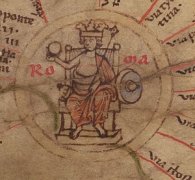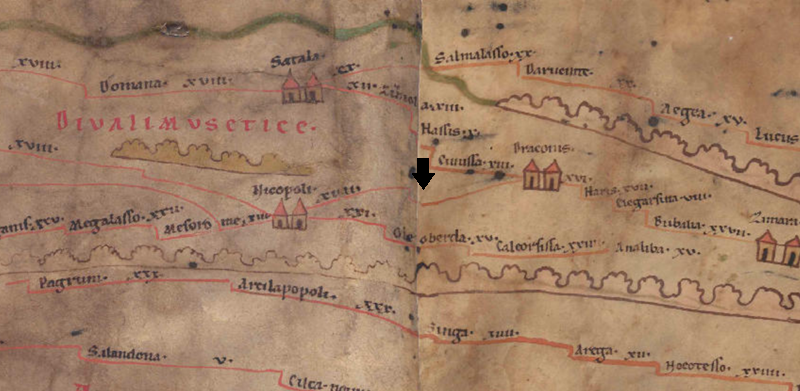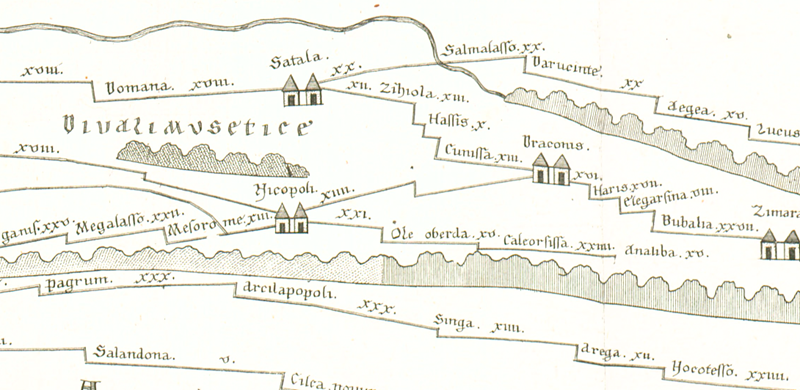
Tabula Peutingeriana – Single display of hits
| Toponym TP (renewed): | (unnamed / illegible, no. 60) |
| Name (modern): | ? Gölova, ehem. Ağvanis ? |
| Image: |  To the image detail |
| Toponym before | Nicopoli |
| Toponym following | Draconis |
| Alternative Image | --- |
| Image (Barrington 2000) | --- |
| Image (Scheyb 1753) |
 |
| Image (Welser 1598) | --- |
| Image (MSI 2025) | --- |
| Area: | Asia Minor |
| Toponym Type: | non-legible Toponym |
| Grid square: | 9A5 |
| Toponym Color: | colourless |
| Vignette Type : | --- |
| Itinerary: |
|
| Alternative Name (Lexica): |
|
| Name A (RE): | ? Olotoedariza |
| Name B (Barrington Atlas): |
|
| Name C (TIR/TIB/others): |
|
| Name D (Miller): | [Olotoedariza] |
| Name E (Levi): |
|
| Name F (Ravennate): |
|
| Name G (Ptolemy): |
|
| Plinius: |
|
| Strabo: |
|
| Dating from Toponym on TP: | --- |
| Argument for Dating: |
|
| Commentary on the Toponym: |
ItMiller 675 vermutet hier den Ausfall von einer oder zwei Stationen, etwa von Olotoedariza (BAtlas 87 D4) bzw. Olotoaelariza, das laut ItAnt 183,2; 207,1 und 215,13 24 Meilen von der vorangehenden Station Nicopolis entfernt war. |
| References: |
Cumont, F. V. M./Cumont, E.: Voyage d´exploration archéologique dans le Pont et la Petite Arménie (= Studia Pontica 2), Bruxelles 1906, 319. |
| Last Update: | 20.09.2025 16:44 |
Cite this page:
https://www1.ku.de/ggf/ag/tabula_peutingeriana/trefferanzeige_en.php?id=1668 [last accessed on November 14, 2025]